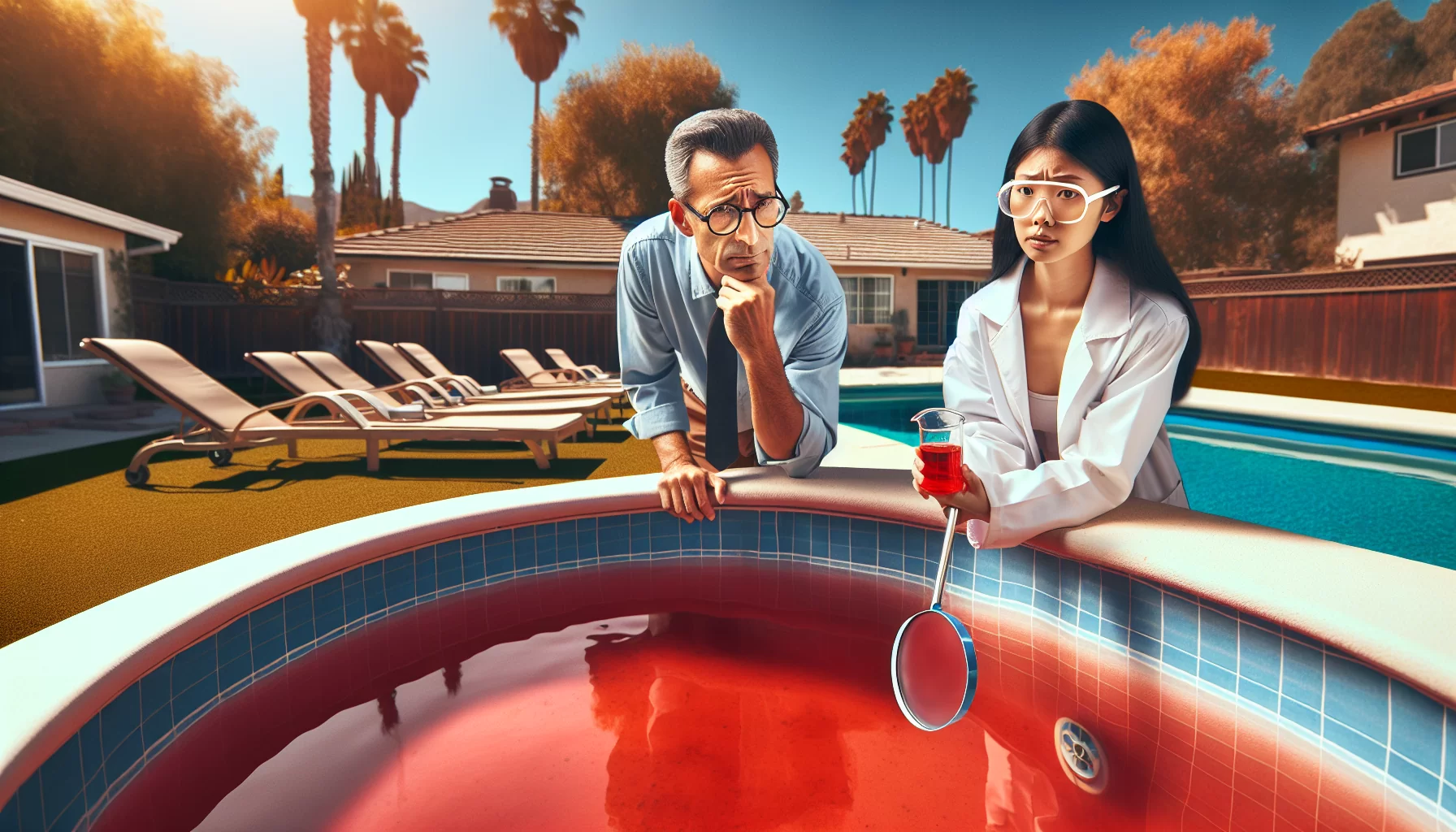A stunning swimming pool can quickly become the centerpiece of anyone’s backyard. But it can be baffling and quite unnerving when this azure charm suddenly starts to turn red. And your first guess might be – is that algae?
Understanding the red discoloration in your swimming pool
The red discoloration in your swimming pool can be attributed to various factors, but the primary culprit is a specific type of algae – the red or pink algae. Scientifically known as Haematococcus Pluvialis, this unicellular organism thrives in stagnating water bodies, including swimming pools. And yes, this is the same algae that’s responsible for the famous pink flamingo’s unique color.
The alarming rate of pink algae growth
It’s quite astonishing and somewhat terrifying how rapidly these algae can multiply. A tiny fraction of these algae can lead to a full-scale invasion in your pool within just a week! Why? One primary reason is that pink algae are resistant to normal chlorine levels. Therefore, they can easily survive and multiply in recreational swimming pools.
Setting off the red flags: Certain misconceptions
This phenomenon of pools turning red often sets off alarms. And these alarms can sometimes be exacerbated by common misconceptions circulating about red or pink algae. Most notably, some believe that pink algae are harmful and toxic to humans. But contrary to this belief, these algae pose no greater harm to human beings than any ordinary types of green algae.
Busting the myth
Haematococcus Pluvialis is a rich source of astaxanthin, a naturally occurring carotenoid found in algae, fish, and birds. This powerful antioxidant has a range of health benefits and is often incorporated into health supplements. It is safe to say that these commonly feared red invaders are not toxic but rather harmless, even beneficial to health in some forms.
Ridding your pool of red menace: Troubleshooting and prevention
A weekly routine of scrubbing the pool and running filter systems more frequently can help keep pink algae at bay. Also, consider getting a pool brush that can reach all corners and crevices of your pool, spaces where these algae love to hide. It wouldn’t be a bad idea to add a phosphate remover to your routine. Phosphates are the primary food source for algae, and eliminating this from the pool could starve the algae, eliminating their population.
Embracing innovative gardening technologies
If all these seem too much work, a more sustainable and innovative solution would be to consider investing in an ultraviolet pool system. These systems work by killing the algae as water passes through UV light, thus constantly purifying your pool water of red algae and other contaminants.
Lastly, always remember that the best way to treat any problem – be it red algae or any other issue – is to prevent it. Taking a hands-on approach and being more attentive to your pool could mitigate such troublesome scenarios and offer you the utmost relaxation and peace of mind that comes with a sparkling clean pool.
So, while the sight of a red swimming pool can evoke discomfort, understanding the causes and exploring solutions can bring about better pool care practices. Such knowledge and precaution might mean the difference between a pool problem and a pool paradise. Equipped with this information, you’re now ready to care for your pool like a pro!
Emma Johnson is a passionate and insightful writer specializing in the house and garden niche, bringing over a decade of experience to her readers. At the youthful age of 34, Emma has already established herself as a leading voice in home improvement, landscaping, and interior design. Her journey began with a degree in Landscape Architecture from the University of Georgia, followed by years of hands-on experience working with renowned landscaping firms across the country.
Emma’s writing career took off when she started sharing her unique ideas and eco-friendly gardening tips on her personal blog. Her ability to blend practical advice with aesthetic design quickly garnered attention, leading to her current position as a featured columnist for a prominent online news site.
Dedicated to sustainable living and innovative design, Emma’s articles offer a wealth of knowledge, from DIY home projects to the latest trends in garden technology. Her work not only enlightens homeowners looking to enhance their living spaces but also inspires a deeper appreciation for the environment.
When she’s not writing or experimenting in her own garden, Emma enjoys mentoring young designers and participating in community beautification projects. Her contributions extend beyond her written work, embodying her commitment to making the world a more beautiful and sustainable place, one home at a time.

